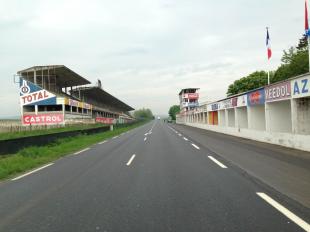
- Circuits:
- Circuit Charade
- |
- Circuit de Nevers Magny-Cours
- |
- Circuit Paul Ricard
- |
- Reims-Gueux
With 19 races in five different continents, following the Formula One calendar around the world requires a lot of flying. So when the circus returned to Europe for the Spanish Grand Prix early in May, we took the chance to make use of a more familiar mode of transport.
There has been much talk about the French Grand Prix potentially returning to the calendar - be it as a replacement for the delayed New Jersey this year or alternating with Spa - but as yet France remains off the calendar. So, armed with an FX50s from Red Bull's title sponsor Infiniti, we decided to take in some of France's circuits en-route to Barcelona.
France's motorsport heritage is long and varied, and while it may not have a grand prix to look forward to each season, it does have four drivers on the 2013 grid in Romain Grosjean, Jean-Eric Vergne, Charles Pic and Jules Bianchi. For them, the Monaco Grand Prix last weekend is as close as they get to a home race, but there are former grand prix circuits littered across the country.
The first stop was less of a circuit and more of a monument, as we headed to Gueux near Reims. This was a true road circuit - a triangular layout between the villages of Gueux, Muizon and Thillois - and most of the roads are still in use today. The real point of interest, though, lies on the D27 between Gueux and Thillois, where the old pit buildings and grandstands still remain as a memorial.
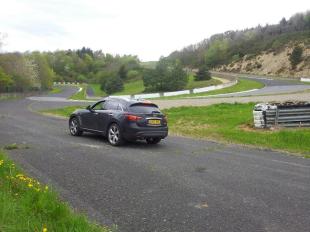
The last French Grand Prix was held at Reims in 1966, and just a year earlier the race had been held for the first time at our next destination: Charade. More commonly known as Clermont-Ferrand, Charade was an 8.055km circuit around the remains of an extinct volcano west of the city and was described as a shorter, faster, tighter version of the Nurburging.
Charade retains an eye on the past, with photos from the four grands prix held there on display in reception. The track was so twisty that Jochen Rindt - among others - wore an open face helmet for fear of motion sickness. The full circuit closed in 1988 but a shortened version remains, and when we arrived we were just sent out with the whole track to ourselves. After a few quick laps it was easy to understand the test the drivers of the era faced, with very short grass run-offs and close concrete walls.
Upon leaving, we took to the old circuit; the majority of which can be driven as public roads. The test of the permanent circuit would have been multiplied around here, with switchbacks and not a moment's rest even in a road car. The sharp drops away to the side make it all the more incredible that the most serious incident on this track in a championship Formula One race was Helmut Marko being blinded in one eye by a loose stone.
Continuing the theme of moving to more recent circuits, we then headed for Paul Ricard. Between 1970 and 1973 the French Grand Prix alternated between Charade and Ricard, and while the former retains its historic feel, the latter has moved on strides since becoming a 'High Tech Test Track' in 2002. If visualising the likes of Sir Jackie Steward and Jack Brabham sliding around Charade was easy, it would seem even more normal to watch modern F1 machinery at Paul Ricard.
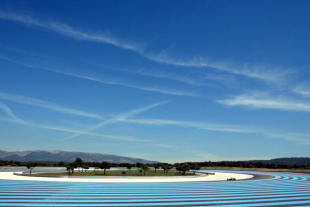
An introduction to race control while a corporate day took place highlighted the advanced nature of the circuit. From here, everything you expect of an FIA Grade 1 circuit can be controlled, as well as one of Bernie Ecclestone's favourite aspects - a sprinkler system to simulate rain.
Ricard was mooted as a potential French Grand Prix host for 2013 but driving it could not be more removed from Charade. Every corner features swathes of run-off area which make for striking pictures but reduce the challenge hugely. The initial blue stripes offer more grip than the track surface itself to help slow a car, while the red stripes are even more abrasive - known as 'coalgrip' - and they're both designed to prevent a car getting damaged making a mistake. Perfect for testing, not great for the spectacle of a grand prix.
Granted, there is an airport as part of the whole development at Paul Ricard, but the access remains inadequate to host a grand prix. Having said that, the 5-litre V8 petrol engine that was at our disposal was equally as enjoyable climbing up to the plateau on which the circuit sits as it was launching off the grid.
Following a blast down to Barcelona for the Spanish GP weekend, it was time to head north once again for our final track action at Magny-Cours. The most recent host of the French Grand Prix clearly has the greatest hunger to regain the race; a new autoroute has been extended beyond Nevers in the north down to the circuit to improve traffic issues for a start.
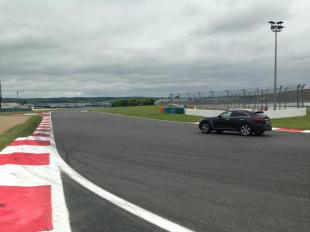
We were given a tour of the circuit by the track director, who was eager to highlight the work that has gone on to try and please the FIA. At Charlie Whiting's request the pit lane has been widened and garages will be extended, with Magny-Cours in constant contact to ensure it always meets the criteria to be able to host a race should the opportunity arise.
The track remains largely unchanged, and its high-speed nature was seen as a good test by Mercedes, Ferrari and Force India last year when they decided to carry out their respective young driver tests there.
With four drivers and the recent success for Renault engines the interest remains from a French point of view, but there's no real desire from F1's side to return and memories of races at Magny-Cours and Paul Ricard could end up fading like those at Reims-Gueux and Charade and only remain part of the sport's past.
Infiniti is the Title Partner and Vehicle Performance Partner of Infiniti Red Bull Racing. You can find out more information about Infiniti in Formula One here
Chris Medland is assistant editor at ESPNF1
© ESPN Sports Media Ltd.
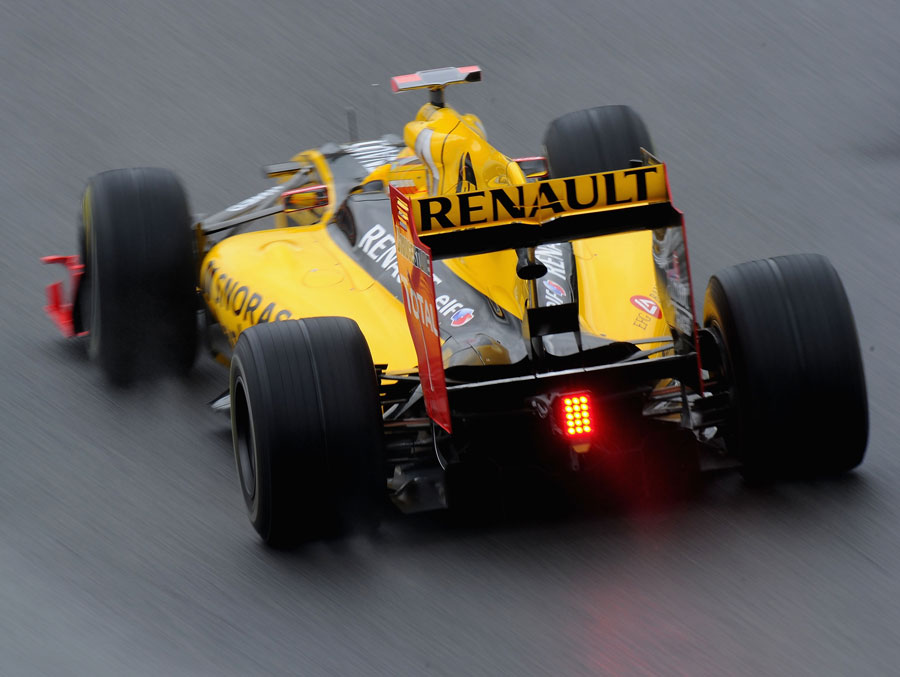 Chris Medland is assistant editor at ESPNF1 Chris Medland, who in his youth even found the Pacific GPs entertaining, talked his way in to work at the British Grand Prix and was somehow retained for three years. He also worked on the BBC's F1 output prior to becoming assistant editor ahead of the 2011 season
Chris Medland is assistant editor at ESPNF1 Chris Medland, who in his youth even found the Pacific GPs entertaining, talked his way in to work at the British Grand Prix and was somehow retained for three years. He also worked on the BBC's F1 output prior to becoming assistant editor ahead of the 2011 season

